Shrouded in equal parts legend and mystery, with a natural display of jaw-dropping beauty on an awe-inspiring scale, Humboldt County in Northern California is a rugged reflection of the state itself.
The first elections held in California in 1849 did not include any participation from residents of anywhere north of the Bay Area, what few residents there were at the time. This was just one year after James Marshall discovered gold at Sutter’s Mill in Coloma, CA sparking the Gold Rush that would eventually lead to further exploration by intrepid fortune-seekers. That same year, in fact, Shasta County rancher Pierson Reading discovered gold in the Trinity Mountains, leading to the region’s first prominent settlement. They dubbed it Eureka, a Greek term meaning “I have found it”. In 1853, Humboldt County was formed having been split off from Trinity County.
The Gold Rush brought global attention to this previously unknown and largely unsettled region roughly 200 miles north of San Francisco and 50 miles south of what is now the Oregon border. As the supply of gold waned, one rush led to another as the dense swaths of giant coastal Redwood trees and the seemingly endless supply of timber that they provided became the new boom in Humboldt.
Of course, this mass deforestation was not sustainable economically or environmentally, and when the timber rush died it left untold acres of clear-cut land and a shell of a community in its wake.
There are many historical archives of Humboldt’s storied past, and while they all speak in great detail of the Gold Rush, and the “Red Gold” looted from the earth through logging, most of them conspicuously leave out the most infamous rush of them all, the green one.
RIGHT TIME, RIGHT PLACE… RIGHT ON
Toward the end of the turbulent 1960s, a new rush of adventure seekers was poking around Humboldt County but they came not with picks or axes, but with peace, love, and an overpowering desire to return to the earth… to get “back to the land”.
Bailing on the Berkeley and Haight Ashbury scene in droves, Humboldt attracted many with its stunning scenery, agreeable climate, fertile soil, and utter seclusion from the much-maligned city life. It didn’t hurt that the region’s depressed economy left behind by the logging bust made buildable, farmable land available for just a few hundred bucks an acre.
The outcast hippies that settled that land defied all the stereotypes heaped upon them by society, bringing with them a strong work ethic and a desire for true community living. Well, almost all stereotypes… they also brought with them shitloads of bagseed from years of consuming imported marijuana from Mexico and Asia. These self-reliant people planted those and many other seeds, growing vegetable and cannabis gardens and setting the roots for a resurgence of the local economy and for what would become the epicenter for cannabis cultivation for decades to come.
FORMING THE TRIANGLE
Humboldt County, Trinity County, and nearby Mendocino County make up what has infamously become known as The Emerald Triangle – a region known worldwide for one thing, cannabis cultivation. Though it all began rather humbly as a means of self-sufficiency, once cannabis farming became communal in Humboldt, the excess from each fall harvest season began to make its way south to the infinitely larger market of Los Angeles where indoor growing wasn’t a thing yet and imported weed was far from ideal, even by those old standards.
The farmers in Humboldt and other reaches of the Triangle were not using harmful pesticides and packaging/transport methods to bring their buds to the market, and it showed. The warm days, cold nights, blankets of coastal fog, and near-perfect humidity levels made Humboldt County a wonderland for weed crops. Growers there had mastered the methods of separating male and female plants to control pollination and produce seedless weed with much higher potency, as well as the process of selecting preferred traits like aroma, flavor, effects, environmental resiliency, and yield and then repetitively breeding those traits.
Before they knew it, pounds of sungrown Humboldt cannabis were fetching four figures in SoCal, and the mysterious “Redwood Curtain” was parted a little further as commerce began to flow in and out of the county once more.
Towns like Garberville, Arcata, Eureka, and others began to swell with long-haired, bearded farmers and suddenly local amenities were being reestablished as weed money paid for new schools, community centers, non-profit groups, and more.
However, the high demand for Humboldt cannabis brought the exact sort of attention that many of these hippy homesteaders had fled from and soon the thumping sound of helicopter rotor blades became an all-too-familiar warning that trouble was on the move and could land on your doorstep at any time.
Referred to as the CAMP program (Campaign Against Marijuana Planting), this multiagency law enforcement effort eerily resembled a military operation from the Vietnam War that many Humboldt residents had grown up protesting. Little did they know it could happen in the hills of California with U.S. citizens in the crosshairs.
These extreme measures by prohibitionists led to the implementation of guerilla grow tactics, using natural tree canopies as cover to camouflage cannabis crops. The weed genie was out of the bottle in Humboldt by then, and farmers there had one more wish to make, and it came true in the mid-90s.
FIRST TIME PATIENTS
In 1996, California voters passed Proposition 215, establishing a statewide quasi-legal medical marijuana market and skyrocketing demand for quality cannabis grown within the state’s borders. Humboldt cannabis farmers had nearly three decades of experience under their fingernails by then, with many of those families having passed down their knowledge – and their crops – to the next generation by then.
At the height of the Prop 215 era, tens of thousands of Californian cannabis farmers were participating in that grey market with virtually no oversight and it just worked. Instead of distributors and regulation, they dealt in duffel bags and reputation.
By 2010, 79% of the cannabis being consumed in the United States was being grown in California, with a substantial portion of that being grown in Humboldt soil.
This relatively brief window in time really was a unique hybrid blend of allowing staunchly anti-government growers to be able to earn a somewhat legal living harvesting a plant that was still mostly unregulated.
That was, of course, about to change by way of Proposition 64.
TAXED & REGULATED
Passed in 2016, Prop 64 was the final nail in the coffin for the untaxed and therefore doomed Prop 215 market. Promising… well… a lot of things, legal adult-use recreational cannabis was supposed to consolidate California’s community-regulated multibillion dollar per year marijuana market into a licensed and state-regulated industry.
Anyone even vaguely interested in weed knows that what was supposed to happen and what has actually happened are two very different things so far. Many legacy operators throughout the state were either left out of the industry due to the egregiously high cost of getting compliant and licensed, or got in and immediately got razed by high taxes, low prices, and a lack of demand for legal weed.
Humboldt was hit hard.
In the two years between the passage of Prop 64 in 2016 and its implementation in 2018, Humboldt County officials tried for the first time to wrangle their wide array of growers under a half-baked licensing program but it was all for not once the final state regs were set in stone.
The first two years of the regulated cannabis market in California have been as rocky and as treacherous as the Humboldt coastline, but late last year, the county made headlines by securing the honor of having the most cultivation licenses, the most cannabis farms, and the most licensed acreage in the entire state.
Be it a sense of pride or just an unwillingness to give up on the land that they love, Humboldt forever refuses to surrender to the status quo.
TERROIR FOR A BETTER TOMORROW
The future of cannabis in California is uncertain, as is its status on the federal level. We know that 66% of Americans polled support legalizing the plant nationwide, but what does that even mean?
All we know for certain is that it means that people are curious. They are curious about this plant and this culture that have both been been shunned by society for so long and they are curious about the people and the places at the very root of that culture.
From San Francisco, to San Diego, to San Sebastián in Spain, those in the know all know about Humboldt. The sun, the soil, and the sandy waterways sync seamlessly with the shade of the Redwoods, the breeze off the ocean, and the heartiness of the people to produce world famous cannabis.
Those specific conditions, many feel, hold the key to Humboldt’s next big rush – appellations.
Earlier this month, the International Cannabis Farmer’s Association received over $72,000 in grant money to fund the newly established Humboldt County Cannabis Appellations Baseline study.
Appellations have long been used in the wine industry to identify, and more importantly protect and reward, specific grape growing regions. Now, craft cannabis growers want those same protections and marketing opportunities.
Think of it, if/when cannabis gets legalized on the federal level opening up interstate or even international commerce, consumers worldwide will want weed that was grown in the infamous Emerald Triangle. They will want Humboldt grown.
This will invite charlatans and conmen to claim that their boof-from-who-knows-where was grown in our gardens and will leave actual Humboldt farmers with little recourse to fight back. By establishing appellations, however, critical cultivation factors such as geographic location, soil types, farming techniques and local microclimates are considered before granting an official designation.
With that designation, Humboldt itself will become a community brand that the local grassroots legacy operators can all tap in to.
The gold rush in California lasted a mere seven years from 1848 through 1855.
The cannabis rush in Humboldt is going on strong for 50 years now and its story is really just beginning.

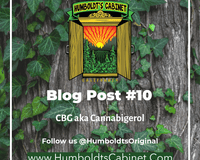
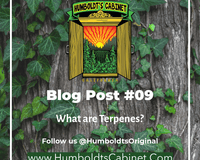
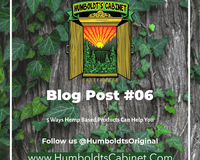
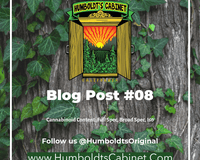
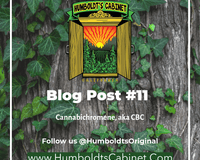




1 comment
Vivian Fasano
Clean and quality merchandise always!